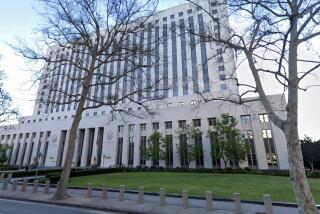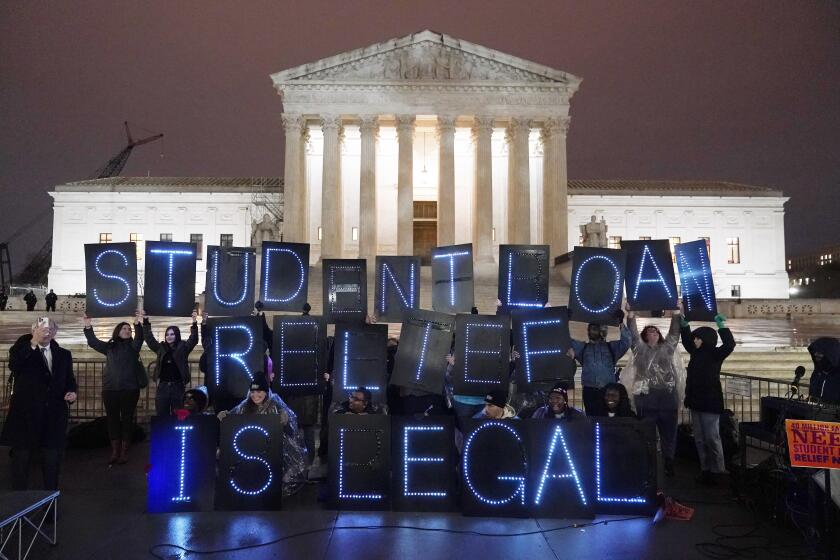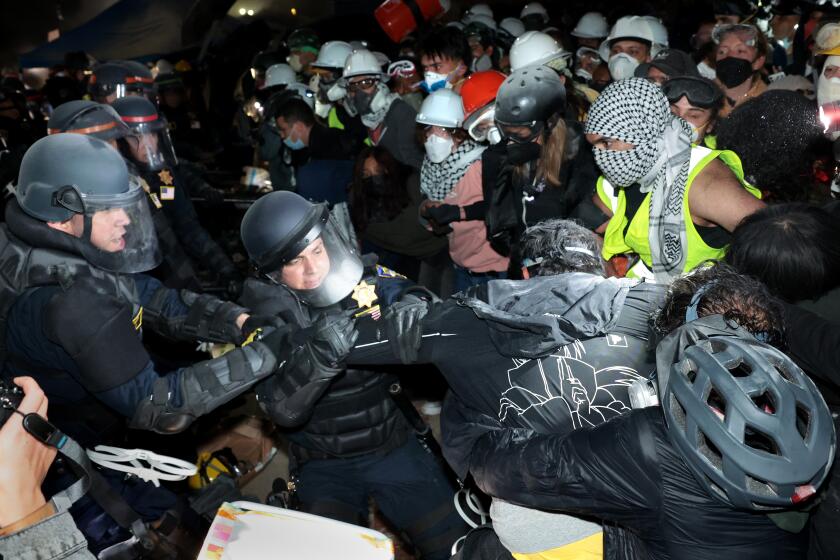Informed Opinions on Today’s Topics : Uniforms Seem Popular, but ACLU Objects
Uniform policies and dress codes at both private and public schools have school officials, students and organized supporters of the Bill of Rights questioning just how far the system should go to to create the proper classroom environment. Students at several schools, including three elementary schools in Glendale, began voluntary uniform programs this fall. Schools in the Santa Clarita Valley, Burbank and Long Beach also have asked students to wear uniforms in an effort to eliminate gang-like attire on campus.
Are school uniform policies and dress codes a good idea?
Kimberly Bishop, principal, Cerritos Elementary School, Glendale.
“It has eliminated gang attire and other clothing that might be offensive. We have uniforms and I think it’s wonderful, even though at first I wasn’t sure how I felt about it. It is actually a voluntary uniform code . . . the school doesn’t enforce it, but 97% of students are wearing their uniforms by choice. I’ve noticed that since the dress code was enforced, students come to school with the attitude that they’re here to learn. It has unified our student population.”
Julie Korenstein, Los Angeles Board of Education member representing the San Fernando Valley.
“Times certainly have changed. From the time I went to school and when my children went to school, the system tended to move away from strict dress codes. But today things have changed so dramatically because of gang activity. Because of this, the board will allow a significant amount of decision-making as to what they (school officials) feel is appropriate or inappropriate in their school. . . . If a school, through this decision-making process, has made the determination to prevent a youngster from wearing something unsafe, I would back them up completely.”
Doris Benson Jones, professor of school psychology, Cal State Northridge.
“Certainly students’ esteem, image and behavior all relate to their appearance. A dress code is a good idea, as long as a number of different parents, teachers and students determine what that dress code should be. A dress code can be very positive in terms of unity. There’s a sense of unity when everyone wears the same clothing. It could enhance self-esteem and minimize gangs and . . . can create a more global sense of commitment to the educational process.”
Marilyn Lerner, PTSA chairwoman, Chatsworth High School.
“When I was in high school, if our skirts were too short, we were sent home. The dress codes today are the same type of thing, only more severe because now clothing may put students in potential danger. Many students argue that baggy clothes don’t indicate gang affiliation and say it’s just a fashion. But if they’re not in a gang and wearing certain types of clothing, a rival gang might mistake them for a gang member and retaliate for whatever reason.”
Allan Parachini, public affairs director, American Civil Liberties Union.
“We (the ACLU) believe there is no relationship between safety, school and uniforms. A school can address the risk of wearing gang-related apparel without imposing a uniform requirement. If a school is aware that specific colors and kinds of clothing are likely to expose a child to harm, then they should impose a dress code that meets certain restrictions. We are comfortable with supporting a school prohibiting certain types of clothing if the school can prove that the wearing of certain apparel is, in fact, related to gang identification that could have direct physical threat to a child.
“Although uniform requirements could eliminate some sense of individuality among students, a recently enacted state law includes an opt-out provision allowing individual families to make the decision that their children will not comply with the uniform provision.”
More to Read
Sign up for Essential California
The most important California stories and recommendations in your inbox every morning.
You may occasionally receive promotional content from the Los Angeles Times.






